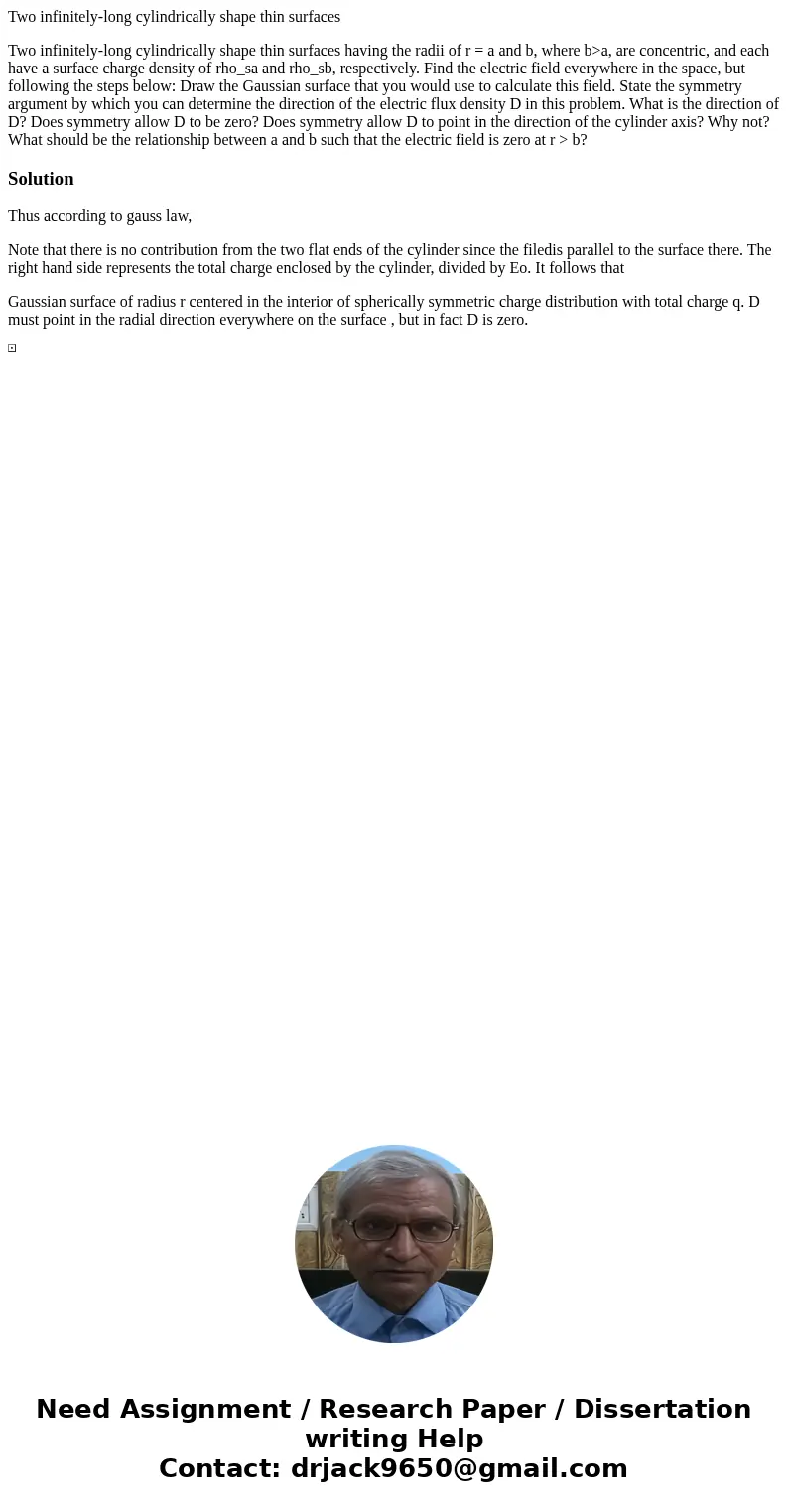Two infinitelylong cylindrically shape thin surfaces Two inf
Two infinitely-long cylindrically shape thin surfaces
Two infinitely-long cylindrically shape thin surfaces having the radii of r = a and b, where b>a, are concentric, and each have a surface charge density of rho_sa and rho_sb, respectively. Find the electric field everywhere in the space, but following the steps below: Draw the Gaussian surface that you would use to calculate this field. State the symmetry argument by which you can determine the direction of the electric flux density D in this problem. What is the direction of D? Does symmetry allow D to be zero? Does symmetry allow D to point in the direction of the cylinder axis? Why not? What should be the relationship between a and b such that the electric field is zero at r > b?Solution
Thus according to gauss law,
Note that there is no contribution from the two flat ends of the cylinder since the filedis parallel to the surface there. The right hand side represents the total charge enclosed by the cylinder, divided by Eo. It follows that
Gaussian surface of radius r centered in the interior of spherically symmetric charge distribution with total charge q. D must point in the radial direction everywhere on the surface , but in fact D is zero.

 Homework Sourse
Homework Sourse